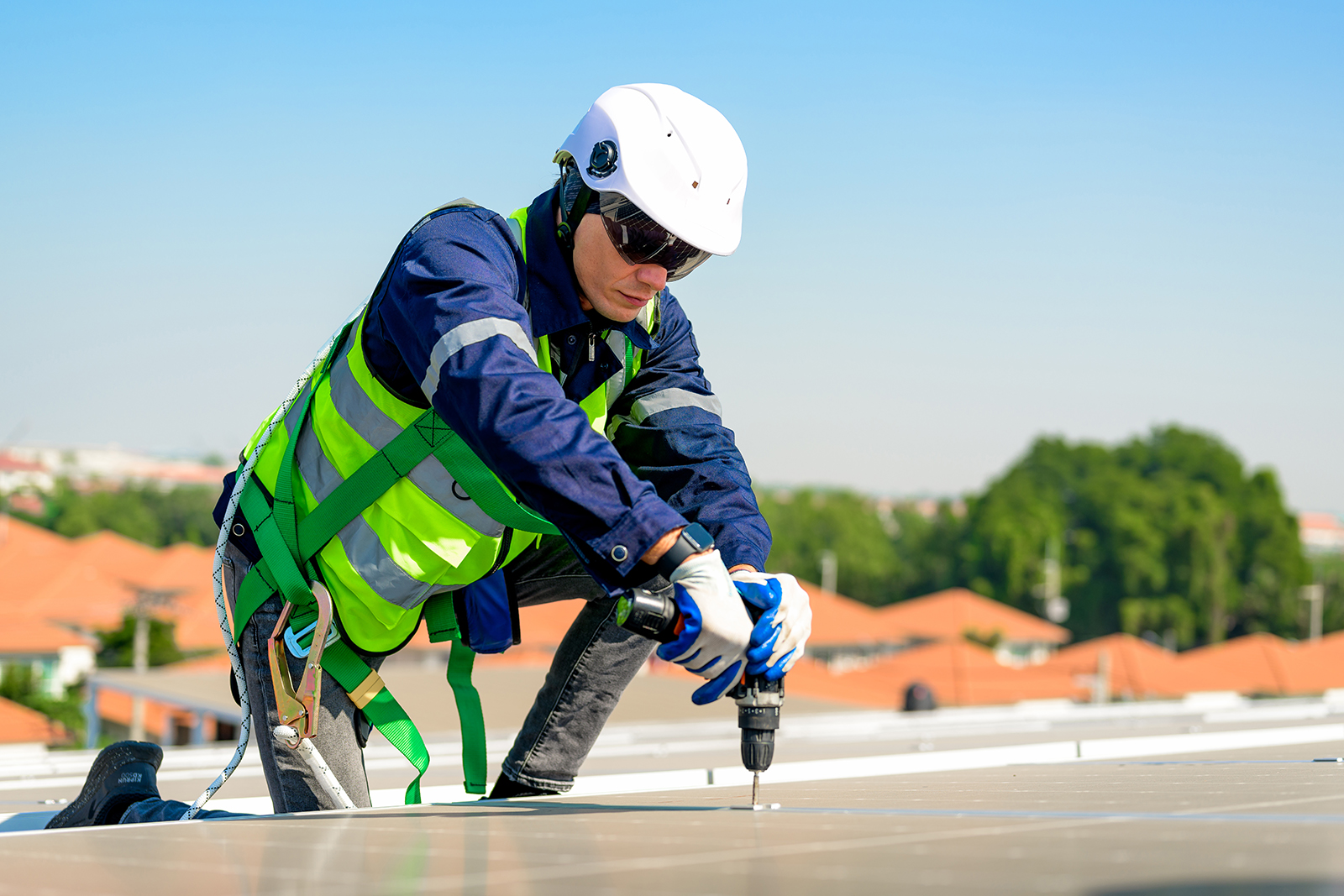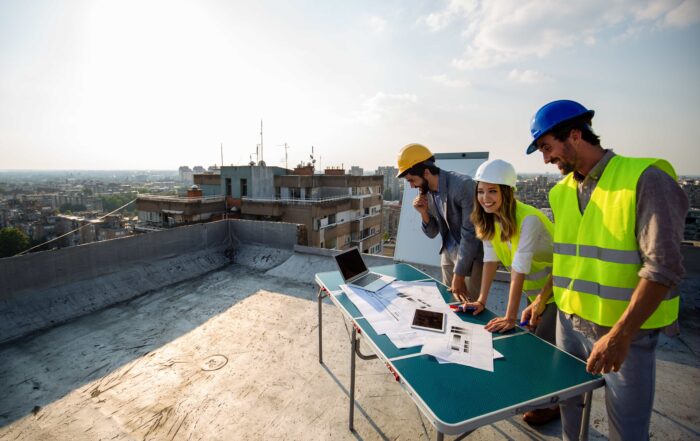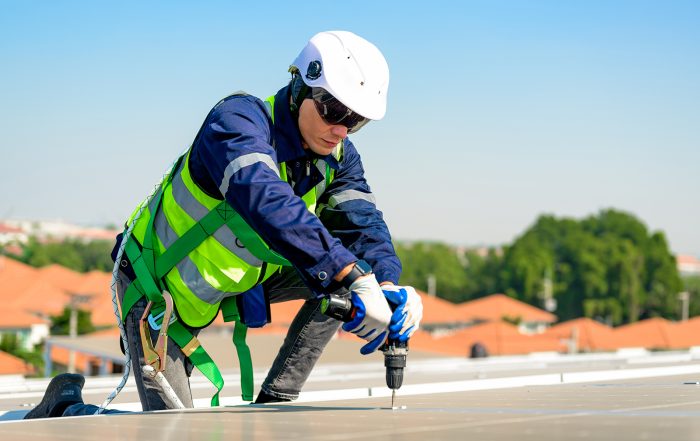
Flat Roof Leaking? Here’s the Quick Fix Pros Don’t Want You to Know!
Are you currently dealing with water dripping through your ceiling from a flat roof leak? The quick fix professionals don’t want you to know involves using liquid roofing sealant and waterproof tape for immediate emergency repairs that can stop active leaks within 30 minutes. This temporary solution can save you hundreds of dollars in water damage while you arrange for professional help.
When a flat roof leaks, time is critical. Water damage can cost homeowners an average of $3,000 to $5,000 in repairs. The secret most roofing contractors won’t tell you is that 70% of flat roof leaks can be temporarily stopped using readily available materials from your local hardware store. According to the General Services Administration, water infiltration through cracks is one of the primary causes of flat roof deterioration, making immediate action essential.
What Causes Most Flat Roof Leaks
Understanding why your flat roof is leaking helps you target the right repair approach. The most common culprits are surprisingly predictable and often preventable with proper maintenance.
- Damaged or deteriorated roofing membranes that develop cracks, splits, or blisters over time.
- Failed flashings around HVAC units and plumbing penetrations that lose their seal.
- Ponding water that sits on the roof for more than 48 hours weakens membrane integrity.
- Debris accumulation that punctures the membrane or clogs drainage systems.
- Blisters or bridging in the membrane are caused by poor installation or aging adhesives.
- Skylight seal failures where weatherstripping deteriorates or frames shift.
Professional contractors know that flashings around roof penetrations account for nearly 40% of all flat roof leak incidents. These vulnerable areas experience constant thermal expansion and contraction, which gradually breaks down sealing materials. Our commercial roofing specialists see this pattern repeatedly across Texas, Colorado, and Oklahoma markets.
Emergency Repair Materials You Need
Professional roofers charge $200 to $400 for emergency service calls, but you can gather these essential materials for under $50 total. Having these items on hand can prevent catastrophic water damage while you wait for professional repairs.
- Liquid roofing sealant (acrylic or silicone-based) for immediate waterproofing.
- Self-adhesive roofing tape that bonds to wet surfaces during active leaks.
- Roofing cement for filling larger cracks and securing membrane patches.
- Waterproof membrane patches cut slightly larger than the damaged area.
- Heavy-duty tarp for covering extensive damage temporarily.
- Roofing nails or adhesive to secure patches and prevent wind uplift.
Excel Construction Group uses premium materials from manufacturers like Atlas and CertainTeed in their professional repairs, but these emergency supplies will buy you valuable time before permanent solutions are installed. For comprehensive material selection guidance, visit our roofing services.
Step-by-Step Emergency Fix Process
The key to successful emergency flat roof repair lies in proper preparation and application technique. These steps can stop active leaks within 30 minutes when performed correctly.
Step 1: Locate the Leak Source
- Measure the interior water stain from the two nearest walls.
- Apply these measurements on the roof exterior to pinpoint the problem area.
- Look for obvious cracks, punctures, or membrane separation.
- Check uphill from the stain location if no damage is visible directly above.
Step 2: Clean and Prepare the Area
- Remove all debris, dirt, and loose membrane material from the repair zone.
- Dry the surface as much as possible using towels or a leaf blower.
- Clear standing water that might prevent proper adhesion.
Expert roofers emphasize that moisture trapped under patches can cause mold growth and premature repair failure. Even during active leaks, removing surface water improves patch adhesion by 60%. Our emergency services team follows this protocol for all urgent repairs.
Step 3: Apply the Emergency Seal
- Spread liquid sealant generously over the damaged area using a brush or trowel.
- Overlap the damage by at least 4 inches in all directions.
- Press self-adhesive tape firmly over punctures or tears, ensuring no air bubbles.
- Apply roofing cement under loose membrane flaps and press them back into place.
Step 4: Secure the Repair
- Nail down any loose membrane edges, then seal nail heads with additional cement.
- Apply a second coat of sealant over the entire repair area.
- Cover large repairs with waterproof membrane patches secured with nails and sealant.
When to Call Professional Help
While emergency repairs can stop immediate damage, certain situations require professional intervention from experienced contractors like Excel CG. Our 26 years of experience and lifetime workmanship warranty provide peace of mind for permanent solutions.
Professional help is essential when you encounter these scenarios:
- Widespread membrane damage affecting multiple roof areas.
- Structural issues are causing persistent ponding water.
- Multiple leak points indicate complete system failure.
- Repeated failures of previous repair attempts.
- Safety concerns accessing the roof during severe weather.
Research shows that 85% of flat roof leaks requiring professional repair involve membrane replacement or extensive flashing work. Our teams across Texas, Colorado, and Oklahoma handle these complex scenarios daily.
Location-Specific Considerations
Different climates present unique challenges for flat roof leaking repairs. Understanding your local conditions helps determine the most effective emergency solutions.
- Texas locations face extreme heat that can soften adhesives and sealants.
- Colorado mountain areas experience rapid temperature changes affecting material flexibility.
- Oklahoma regions encounter severe storms requiring wind-resistant repair methods.
- Urban environments may have access restrictions requiring specialized equipment.
- Historic buildings need preservation-compliant emergency solutions.
Our location-specific expertise includes services in major markets like Dallas, Denver, Austin, Colorado Springs, and Oklahoma City. Each location presents distinct weather patterns and building codes affecting repair strategies.
Advanced Emergency Techniques
When basic sealant applications fail, these advanced techniques can provide stronger temporary solutions until professional help arrives.
Multi-Layer Patching Method
- Apply the first patch with a roofing cement base layer.
- Install fiberglass mesh over the cement while still wet.
- Apply a second cement layer over the mesh.
- Install the final membrane patch with a generous overlap.
Tarp Installation for Large Damage
- Secure heavy-duty tarp to undamaged roof areas using battens.
- Ensure proper slope to direct water away from the building.
- Weight down or anchor all edges to prevent wind uplift.
- Create temporary drainage channels if needed.
Our mitigation specialists use these techniques for emergency stabilization before permanent repairs begin. Proper execution prevents secondary damage while materials are sourced and weather permits full restoration.
Your Next Steps for Lasting Protection
Emergency repairs are temporary solutions that typically last 3 to 6 months under normal weather conditions. Planning for permanent repairs prevents recurring leaks and protects your property investment.
Don’t let a flat roof leaking emergency turn into a costly disaster. While these quick fixes provide immediate relief, professional assessment ensures long-term protection for your home or business. Excel CG’s emergency response team is available 24/7 to handle urgent repairs and provide comprehensive roof restoration services.
Contact our experienced professionals today for a free inspection and permanent solution that will protect your property for years to come. Your roof deserves the quality materials and expert installation that only certified professionals can provide.






































